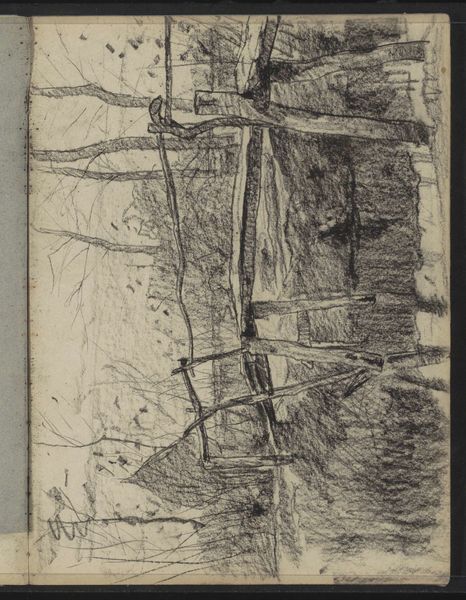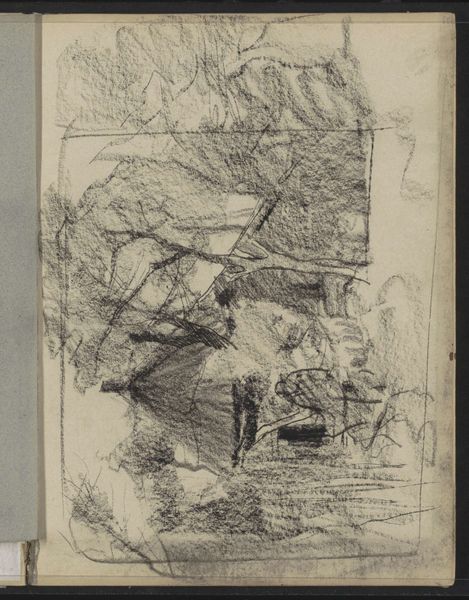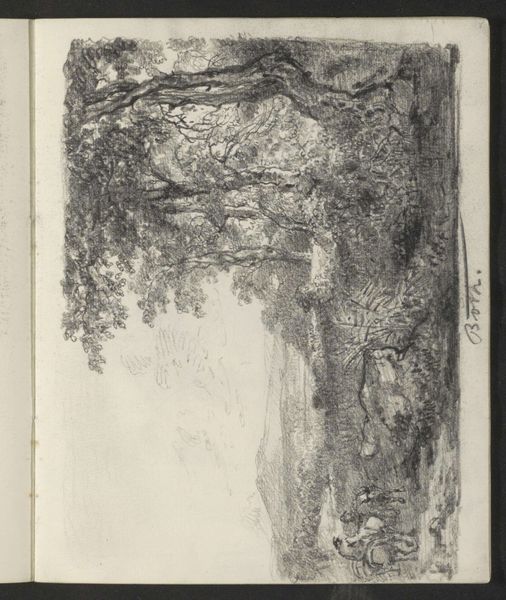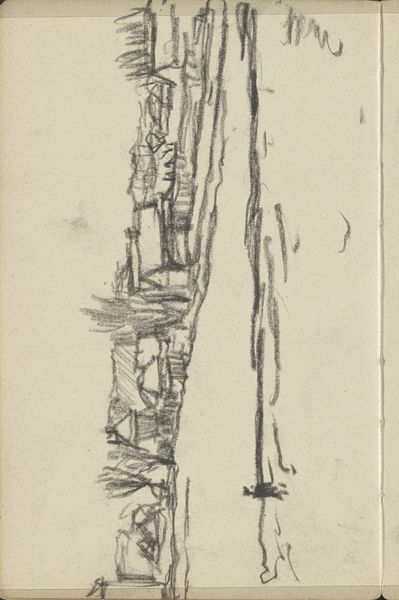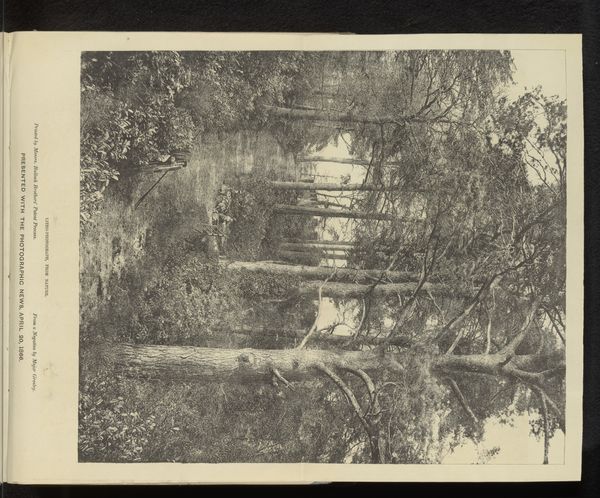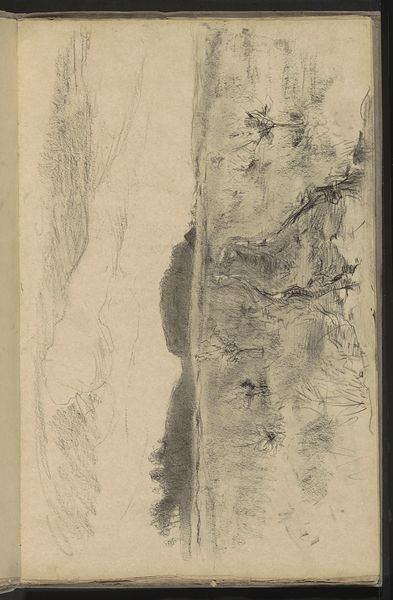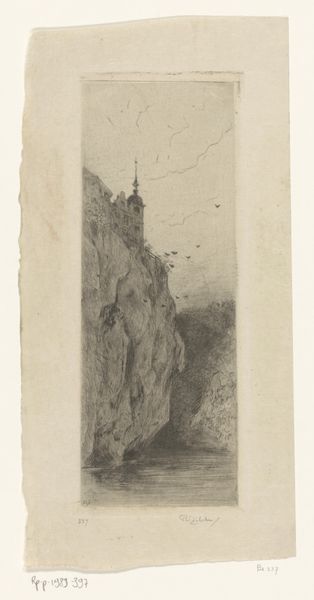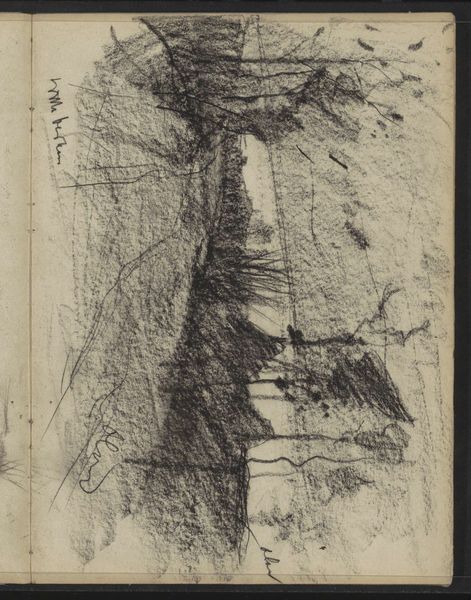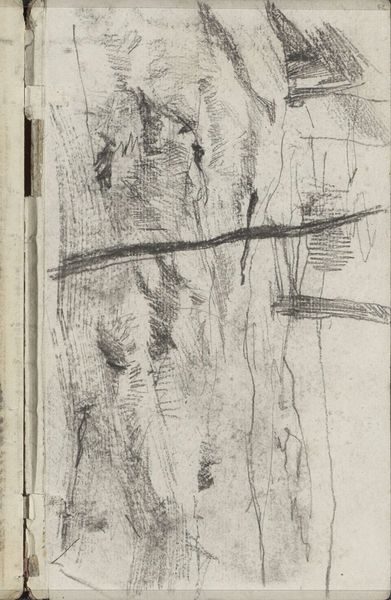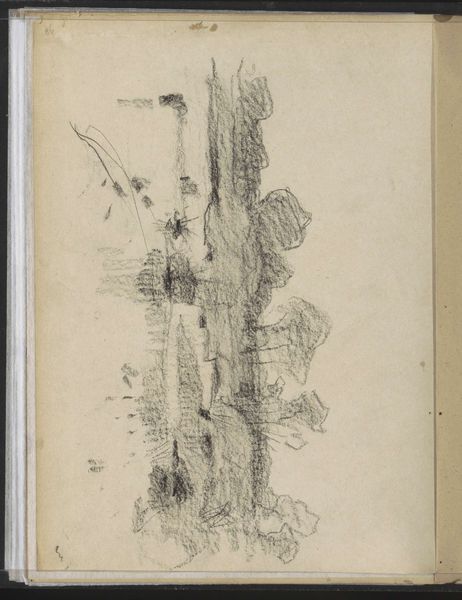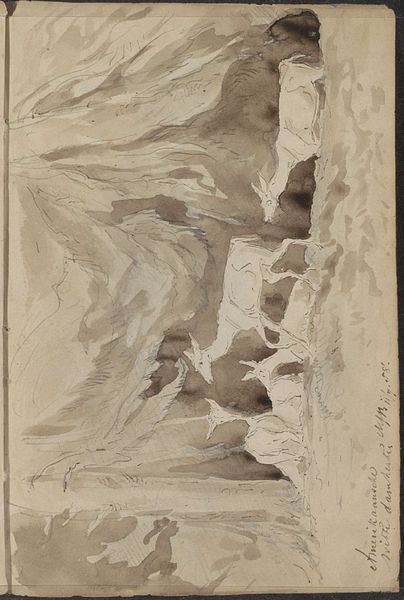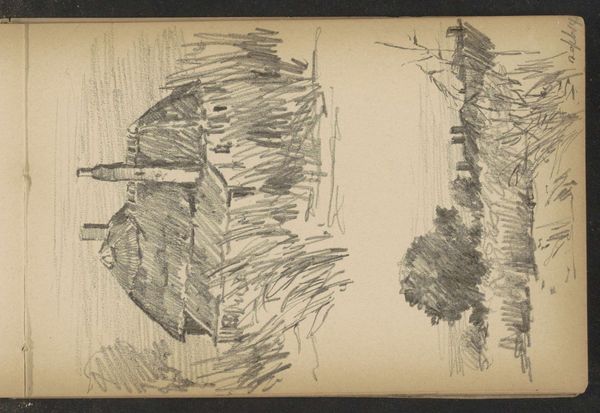
#
toned paper
#
pen sketch
#
incomplete sketchy
#
personal sketchbook
#
ink drawing experimentation
#
pen-ink sketch
#
pen work
#
sketchbook drawing
#
sketchbook art
#
watercolor
Copyright: Rijks Museum: Open Domain
Editor: Here we have "Gezicht in Ede" – that translates to "View in Ede" – created between 1893 and 1897 by Willem Witsen, using pen and watercolor on paper. It feels very immediate, like a fleeting impression, perhaps made on the spot. What do you make of it? Curator: Indeed. We observe first the contrast. The artist’s strategic deployment of ink against the toned paper. The skeletal, almost architectural framework rendered with decisive, rapid strokes. Note the textured surfaces and the varying densities of the pen work, which provide a remarkable depth. Editor: I notice that it appears unfinished in areas. Does this affect our understanding of the artwork? Curator: It presents a fascinating tension between the defined and the suggested. Does the "unfinished" quality undermine the composition or instead heighten its evocative power? Is it intentionally vague? Note the compositional structure of the sketch – see how the foreground relates to the suggestion of depth. Editor: So, rather than seeing it as incomplete, we could view it as a study of form and light, an exercise in capturing a specific moment. It is indeed striking how depth and shadow can be suggested using minimal lines. Curator: Precisely. Consider the materiality, how the absorbent quality of the paper invites a diffusion of the ink, influencing its character. And how this incompleteness offers viewers room for imagination and subjective involvement. The eye completes what is suggested but not explicitly stated. Editor: I never considered that before, but that makes perfect sense. Thinking about the intrinsic qualities and structural composition definitely opens up new avenues of appreciation. Curator: Yes, formalist analysis asks that we move beyond surface appearances and attempt a reading of its inherent, structural language. A fascinating sketch!
Comments
No comments
Be the first to comment and join the conversation on the ultimate creative platform.
